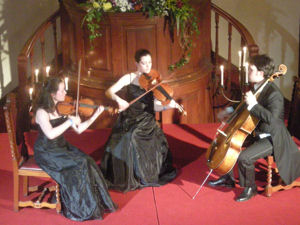As you write, you try to represent with words the ideas you have in mind. When you read what you have written, the words you chose bring those ideas back to your mind.
This is simple enough. The trouble is that when other people read what you have written, the words may bring to their minds ideas different from what you thought of when you wrote the words.

Source: Messy Room, emotionaltoothpaste, Flickr
For instance you might write yourself a note that says, “The room is a mess. Clean it.” Maybe by “mess” you mean that a pair of jeans is draped over the chair, a pillow lies on the floor, and books are stacked high on the table beside the bed. By “clean it,” you mean hang the jeans in the closet, put the pillow on the bed, and shelve the books.
On the other hand, maybe by “mess” you mean the spilled bowl of Spaghetti-Os on the rug, the four-foot–high pile of dirty clothes in the corner, and two pizza boxes under the bed, neither quite empty. By “clean it” you mean throw the clothes from the corner over the Spaghetti-Os to hide the mess on the carpet and pull the bedspread down to hide the under-the-bed pizzas.

Source: Detailing Business Card, nhuisman, Flickr
Well-chosen details can make general statements like “the room is a mess” clear to a reader.
During revision you can add details to general statements to clarify their meanings. In the questions below, read each list of details and choose which general statement the list would clarify. This won’t be difficult, but pay attention to the types of details included and the way the details explain the general statement.

 Using your notes, answer this question: How did the details clarify the general statements? In other words, how did the details paint a picture with words?
Using your notes, answer this question: How did the details clarify the general statements? In other words, how did the details paint a picture with words? The details are well-chosen and specific to the general statements. The reader can picture what the writer is saying.
For example, saying “The room is a mess” tells us something about the room but doesn’t necessarily create a picture in our minds. However, when details are added about the spilled Spaghetti-Os™, dirty clothes, and moldy pizzas, we get a mental image of a stained orange carpet, mountains of laundry scattered around the room, and disgusting old pizza. The added details not only add interest and show what the writer is trying to say, but they also create an image in our minds and make us want to read more.
Now for something a little more challenging. Read through the paragraph below and find three general statements that you could revise by adding well-chosen details.

Source: TrioBroz, Barbara.bros, Wikimedia
(1) I wanted to live with music, to live through music, to use music to share experience. (2) I figured out that music was not something just to be consumed like potato chips or ice cream, and it wasn’t something to become expert at like baseball stats or chess moves. (3) I figured that music was something to live with just like you would live with a friend. (4) There are certain songs, for instance, that I love to ride with in the car. (5) These songs go along with me while I’m driving. (6) There are also other songs that I like to call on, to ask over, when I’m feeling lonely and sad. (7) These songs don’t ever try to cheer me up in the annoying way some of my human friends do; they let me feel what I’m feeling and they remind me that feeling sad is a part of life, a part of life I can value. (8) There are lots of other times in my day-to-day life when I call on music to share my experience. (9) All of these times are better when I have music to be with me, like a friend.
Where might details be added most effectively? Check three boxes below to indicate your answers.
There are many other ways to include details. The important thing is to be awake to the possibility of adding details to general statements (or substituting details for general statements) as you revise.